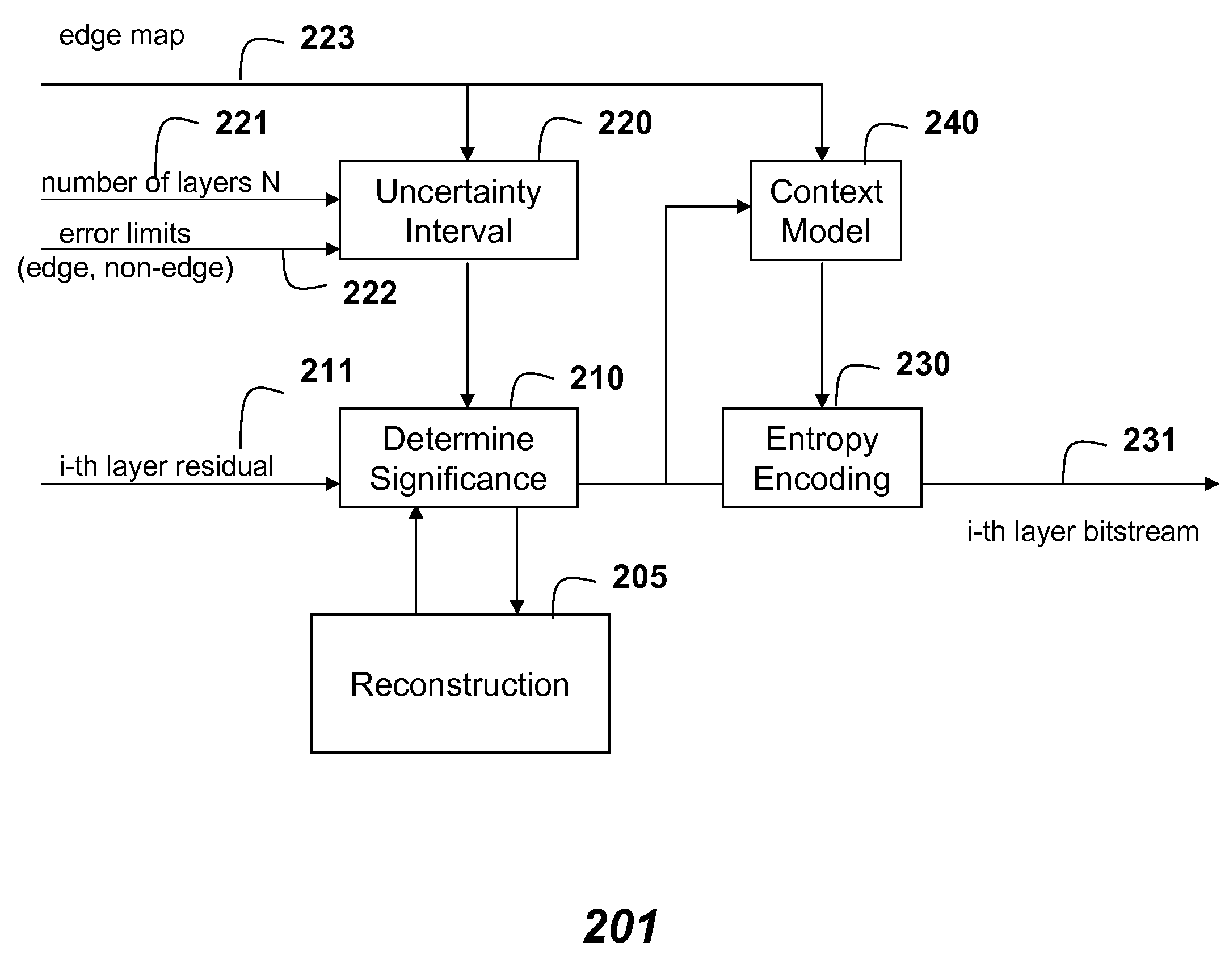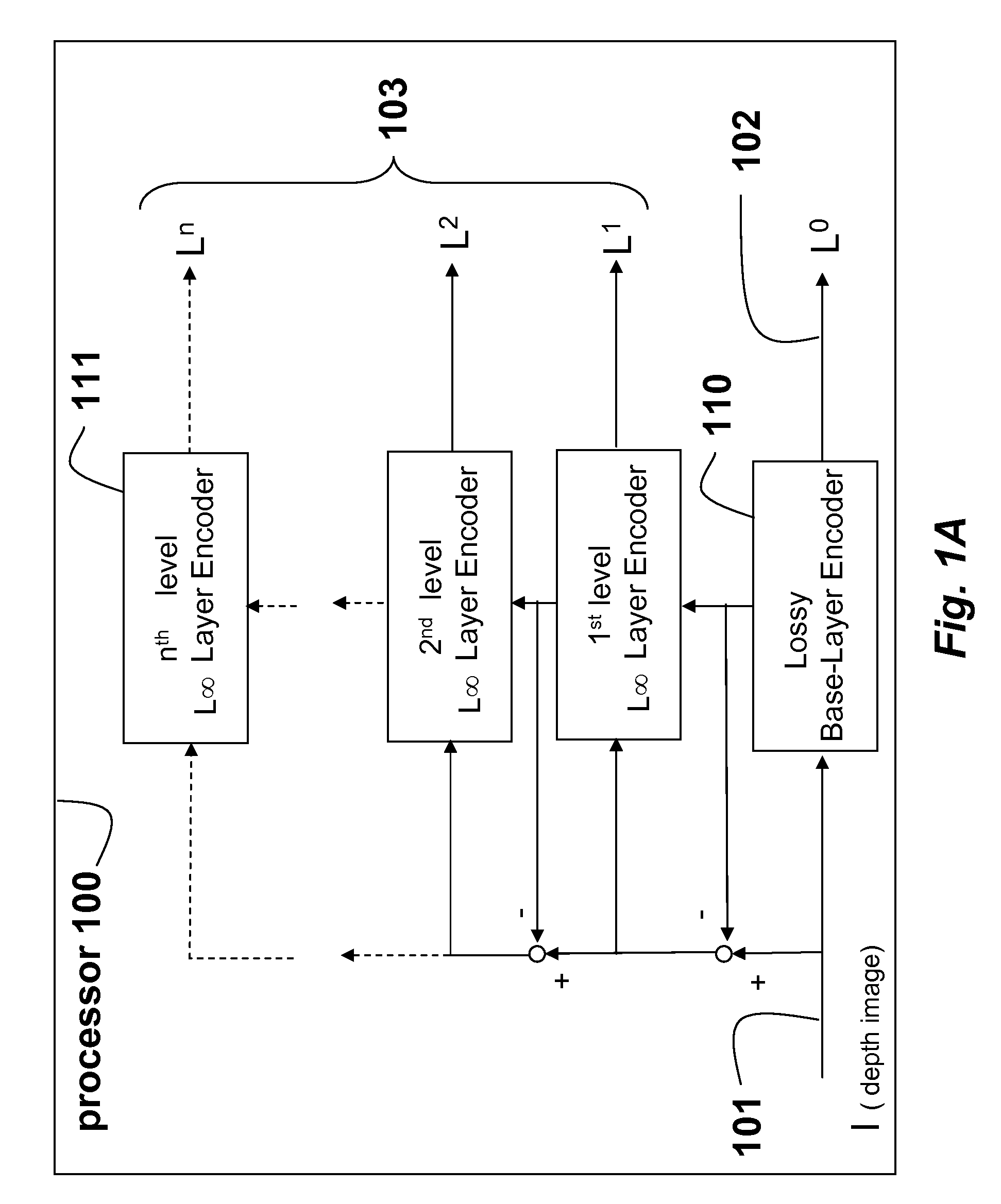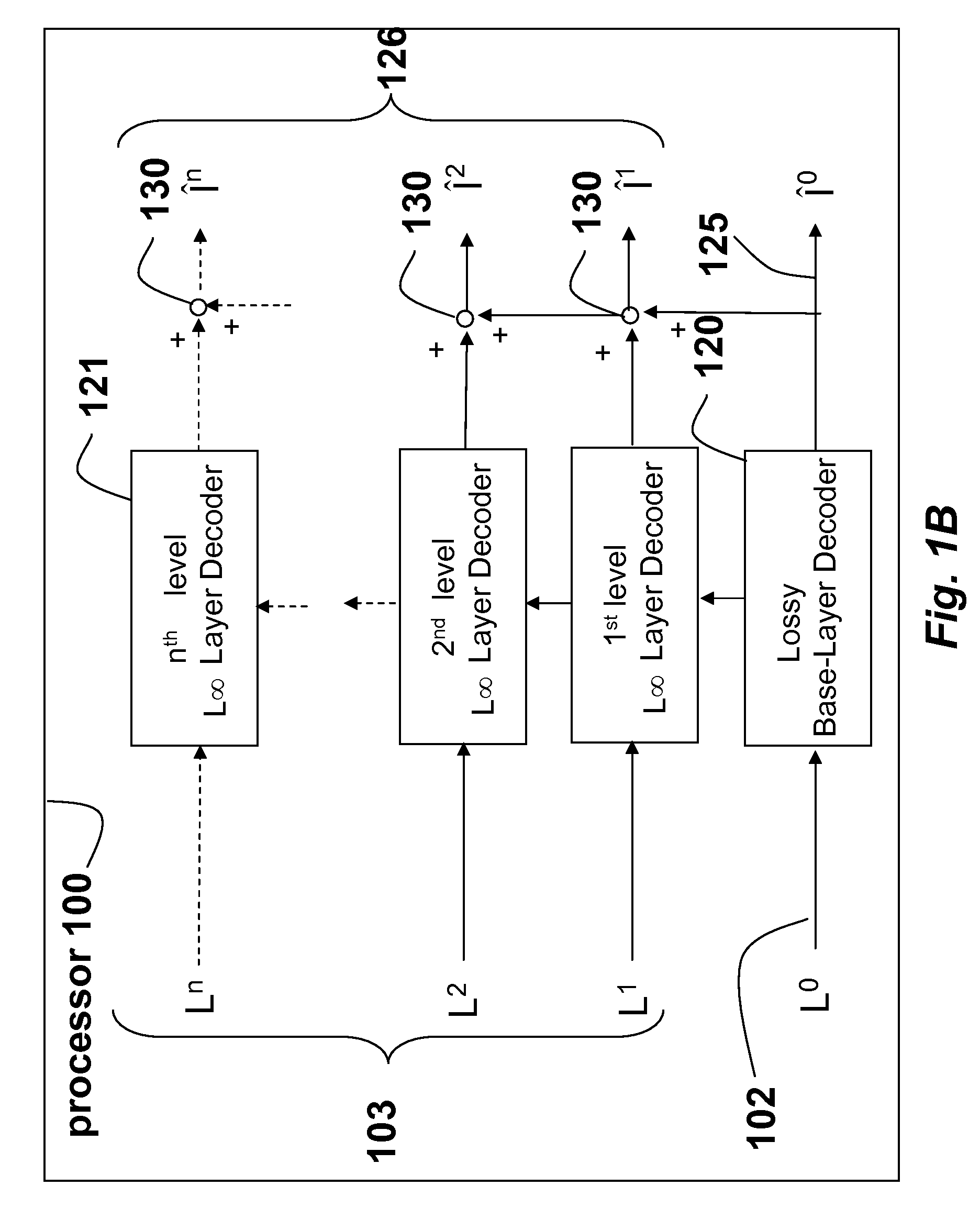Method Coding Multi-Layered Depth Images
a multi-layered, depth image technology, applied in the field of depth video coding, can solve problems such as annoying artifacts and depth information errors
- Summary
- Abstract
- Description
- Claims
- Application Information
AI Technical Summary
Benefits of technology
Problems solved by technology
Method used
Image
Examples
Embodiment Construction
[0010]Virtual View Synthesis
[0011]Our virtual image synthesis uses camera parameters, and depth information in a scene to determine texture values for pixels in images synthesized from pixels in images from adjacent views (adjacent images).
[0012]Typically, two adjacent images are used to synthesize a virtual image for an arbitrary viewpoint between the adjacent images.
[0013]Every pixel in the two adjacent images is projected to a corresponding pixel in a plane of the virtual image. We use a pinhole camera model to project the pixel at location (x, y) in the adjacent image c into world coordinates [u, v, w] using
[u, v, w]T=Rc·Ac−1·[x, y, 1]T·d[c, x, y]+Tc, (1)
where d is the depth with respect to an optical center of the camera at the image c, and A, R and T are the camera parameters, and the superscripted T is a transpose operator.
[0014]We map the world coordinates to target coordinates [x′, y′, z′] of the virtual image, according to:
Xv=[x′, y′, z′]T=Av·Rv−1·[u, v, w]T−Tv. (2)
[00...
PUM
 Login to View More
Login to View More Abstract
Description
Claims
Application Information
 Login to View More
Login to View More - R&D
- Intellectual Property
- Life Sciences
- Materials
- Tech Scout
- Unparalleled Data Quality
- Higher Quality Content
- 60% Fewer Hallucinations
Browse by: Latest US Patents, China's latest patents, Technical Efficacy Thesaurus, Application Domain, Technology Topic, Popular Technical Reports.
© 2025 PatSnap. All rights reserved.Legal|Privacy policy|Modern Slavery Act Transparency Statement|Sitemap|About US| Contact US: help@patsnap.com



